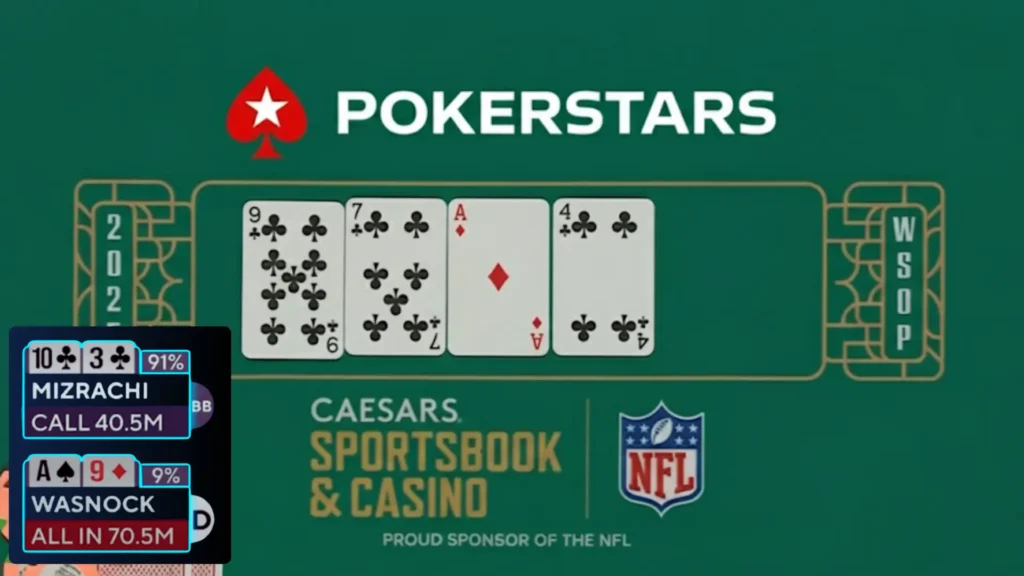The 2025 World Series of Poker (WSOP) Main Event concluded in dramatic fashion in Las Vegas, producing a final hand that will be studied for years. Michael Mizrachi, already a four-time Poker Players Championship winner, captured the game’s most prestigious bracelet and $10,000,000 after defeating recreational player John Wasnock heads-up. Wasnock’s remarkable run ended with a runner-up finish worth $6,000,000 — a life-changing result in its own right.
This decisive hand illustrates the razor-thin margins of elite poker and serves as an excellent case study through the lens of game theory optimal (GTO) analysis.
Preflop: Small Blind Raise vs Big Blind Defense
- Wasnock (SB): 75,500,000 (30.2bb)
- Mizrachi (BB): 509,000,000 (203.6bb)
- Blinds: 1,000,000/2,500,000 with a 2,500,000 big blind ante
From the small blind, Wasnock raised to 5,000,000 holding A♠9♦. While the raise looks standard, GTO principles suggest ace-nine offsuit is often better mixed into a limping range at this stack depth. Raising is not a clear mistake, but it is not the most profitable line.
Mizrachi defended with 10♣3♣, a call fully consistent with optimal play. Every suited hand continues in this spot, making it a straightforward decision.
Flop: A♦9♣7♣
The board hit both players: Wasnock flopped top two pair, while Mizrachi picked up a flush draw.
Mizrachi checked, which fits balanced strategy from the big blind on this texture.
Wasnock checked back, diverging from GTO preferences. With such a strong hand on a draw-heavy board, betting at a high frequency is preferred to build the pot and deny equity to drawing hands.
Turn: 4♣

The turn completed Mizrachi’s flush. He checked again, consistent with balanced play.
Wasnock bet 10,000,000 into 12,500,000. While betting itself is reasonable, the sizing was too large. GTO theory favors a smaller sizing around 40% of the pot, which extracts value while keeping ranges balanced. Nearly pot-sized betting polarizes unnecessarily and plays directly into flush-heavy holdings.
Mizrachi raised to 30,000,000, a sound decision. Medium-strength flushes benefit from fast play, while the strongest can slow-play. His sizing was on the larger side but still within strong theoretical boundaries.
Facing the raise, Wasnock shoved his remaining stack, and Mizrachi snap-called. At this point, both players were aligned with optimal play: ace-nine shoves, and flushes that raise are pure calls.
River: 5♣
The river brought another club, confirming Mizrachi’s victory. He was crowned the 2025 WSOP Main Event champion and collected $10,000,000.
Verdict: Near-Perfect vs Small Leaks
Mizrachi’s decisions were nearly flawless — from defending preflop to checking on flop and turn, raising, and calling — each step aligned closely with GTO strategy.
Wasnock, however, faltered in two areas:
- Checking back top two pair on the flop instead of betting.
- Using an oversized turn bet, which unbalanced his range and left him vulnerable.
While theory highlights these mistakes, making perfect decisions under the pressure of a $10 million final is another matter entirely. Wasnock’s instincts still carried him to a career-defining result, and his performance remains one of the summer’s standout stories.









